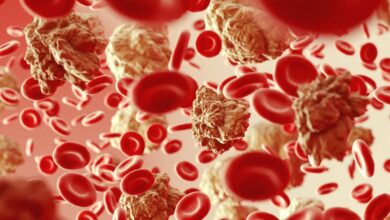Infection Control in Hospitals
Global protocols and developed standards that ensure the best level of infection prevention
Hospitals and health institutions are aware of the importance of fighting infection, and only had to abide by the international standards in this regard and were keen to reduce the spread of infection among patients in hospital rooms or in operating rooms. The Infection Control Unit in hospitals has key clinical priorities to protect patients, visitors and staff from the risk of healthcare-associated infections caused by bacteria (germs).
Today, most hospitals in the Gulf States and the Middle East region have received international accreditation and certification for following guidelines on infection prevention and control after carefully abiding by specific policies to ensure the best level of disease prevention and infection control for doctors, nurses and patients. Hence, the principle of infection control requires specific policies with an organizational structure to be supervised by specialists in this field, in addition to conducting necessary training for the medical staff and team in order to achieve this purpose.
Infection prevention and control programs are one of the main pillars of health institutions. All countries are developing their capacities in this field since infection prevention and control depends on developing coordination with all the medical staff, healthcare providers, medical laboratories and others. Every health facility is obliged to establish monitoring systems for hospital infections and to identify serious conditions, especially in patients who spend more than ten days in the hospital as well as ICUs or patients with low weak immunity. Every hospital must develop a clear plan for cleaning, disinfecting and decontamination with the need to commit to this plan by working as a team between the doctors, hospital management and nursing staff.
Hence, the Infection Control Unit was established in every health facility and its primary mission is to support the hospital’s health system to care for patients, reduce and prevent healthcare-associated infections, spread health awareness and enhance patient safety by reducing health risks. The objectives of the Infection Control Unit are to implement policies and procedures for standard infection control precautions as well as precautions based on methods of disease transmission. It is also the duty of Infection Control Units to fully adhere to the policy of antibiotic treatment and ensure compliance with the approved guide of policies and procedures for isolation precautions in health facilities and all policies of other departments, as well as providing facilities and equipment that allow healthcare providers and nurses to maintain good infection control practice.
The educational aspect is very important in this regard, whether for healthcare providers, hospital staff, patients or even visitors. Thus, it is the responsibility of the Infection Control Unit supervisors to prepare publications or brochures explaining the importance of infection control and how to maintain general hygiene and sterilization, while providing workshops and training courses for various departments in order to train them on some modern means of infection control.
Methods of Infection Control
The adopted procedures and policies are primarily intended to prevent infection or its transmission among patients, healthcare providers and visitors. Hospitals must strictly comply with these procedures when dealing with patients or equipment in order to ensure a clean, sterile and infection-free environment surrounding the patient and provide a completely safe and clean environment that ensures the prevention of microbial growth.
There are various infection control methods that are integrated and should be applied with high accuracy in order to ensure a sterile environment.
The easiest and most effective way to reduce the spread of infection is good hand hygiene, this means washing hands regularly throughout the day with soap and water. Healthcare staff, including ambulance crews practice hand hygiene when caring for patients to prevent and control infections.
Some basic hygiene procedures include ensuring all staff have access to single-use disposable gloves, making sure all staff can easily access hand washing facilities or hand sanitizer and safe disposal of clinical waste, blood and other body fluids.
The healthcare worker should assess the level of risk of splashes or sprays of blood or body fluids, and secretions or excretions involved in the procedure being undertaken and wear appropriate apparel, ie. plastic apron, gown, mask, goggles, face shield. All healthcare workers must take precautions to prevent injuries caused by needles, scalpels and other sharp instruments or devices. The adoption of safe work practices and correct disposal is incumbent on all who use sharps. The maintenance of a safe environment for patients incorporates the basic requirement that the area a patient is nursed in, and equipment used on the patient is hygienically clean.
Factors that increase cross-infections may include lack of hand washing facilities, patients close together or sharing rooms, understaffing, preparation of IVs on the unit, lack of isolation facilities, no separation of clean and dirty areas, excessive antibiotic use, inadequate decontamination of items and equipment and inadequate cleaning of environment.
The health of hospital staff is fundamental to prevent the transmission of infection, through the following steps:
- Regular and pre-employment health checkups in order to ensure that the employee is free from any medical condition.
- Tests HIV (For AIDS), SGPT (For Liver), Cholesterol (Heart), HBsAg (Hepatitis) and Creatinine (Kidney)
- Healthcare workers who are at risk for exposure to serious, and sometimes deadly, diseases should get appropriate vaccines to reduce the chance that you will get or spread vaccine-preventable diseases by making sure they are up-to-date with recommended vaccines that include Hepatitis B, MMR (Measles, Mumps and Rubella), Varicella (chickenpox), Tdap and meningococcal.
- Educating employees about the infection control program while focusing on specific sections such as surgery, operating rooms, sterilization, hygiene, food preparation and maintenance services because of their direct contact with patients.
- Attaching great importance to the role of laboratories in the infection control program in terms of infection diagnosis. Labs should cooperate with other departments.
Intensive Care Units and Infection Control
Intensive Care Units are one of the most important departments in hospitals. Although many issues of infection control can be countered by technology (gloves, sharps covers, air exchanges), none of these aids work without constant vigilance on the part of healthcare workers. Caution is especially critical in the intensive care unit (ICU). We see more infections in this population due to the length of time they may be in a unit; those infections can be due to the number of invasive lines, mechanical ventilation, or other parameters specific to ICU patients. However, the practices to reduce infections remain the same as for all patients.
Patients in the ICU are severely ill and often bed-ridden, they also tend to have many invasive devices such as Foley catheters to measure output, central lines for fluids and monitoring, arterial lines to measure pressures, endotracheal tubes for assisted ventilation, etc., that patients in other parts of the hospital don’t have. The presence of an invasive device automatically increases the risk of infection because it provides a ready means of entry by bacteria into a normally clean space. Although these patients can be particularly susceptible to infections, hand hygiene guidelines remain the same everywhere. Handwashing is required before and after each patient encounter and the use of antimicrobial agents prior to invasive procedures. The use of alcohol-based waterless products can improve adherence with hand hygiene practices due to ease of use and less time required for effective disinfection.
Hand hygiene, environmental cleaning, and appropriate hospital staffing can impact ICU infection rates. Continuing staff education, minimizing risk factors, and implementing guidelines is necessary to decrease infections such as catheter-related bloodstream infections, urinary tract infections, ventilator-associated pneumonia, etc.
The strategy for prevention may include hand washing, use of gloves to prevent contamination of the hands when handling respiratory secretions, wear gloves and gowns during all contact with patients and fomites potentially contaminated with respiratory secretions and use of aseptic technique. The staff should clean and decontaminate all equipment after use, sterilize or use high-level disinfection for all items that come into direct or indirect contact with mucous membranes, rinse and dry items that have been chemically disinfected, package and store items to prevent contamination before use and keep environment clean, dry and dust-free.
7 steps to perform handwashing properly
Keeping hands clean is one of the most important ways to prevent the spread of infection and illness. In healthcare settings, hand hygiene can prevent potentially fatal infections from spreading from patient to patient and from patient to healthcare worker and vice-versa. The adoption of safe work practices and correct disposal is incumbent on all who use sharps. The maintenance of a safe environment for patients incorporates the basic requirement that the area a patient is nursed in, and equipment used on the patient is hygienically clean. Medical teams and healthcare providers follow the seven-step handwashing technique in order to ensure that the hands have been thoroughly cleaned and sterilized.
The 7 steps of handwashing include:
- Wet your hands and apply enough soap
- Rub your palms together.
- Rub the back of each hand.
- Rub both your hands while interlocking your fingers.
- Rub the back of your fingers.
- Rub the tips of your fingers.
- Rub your thumbs and the ends of your wrists then rinse both hands properly with water.
















